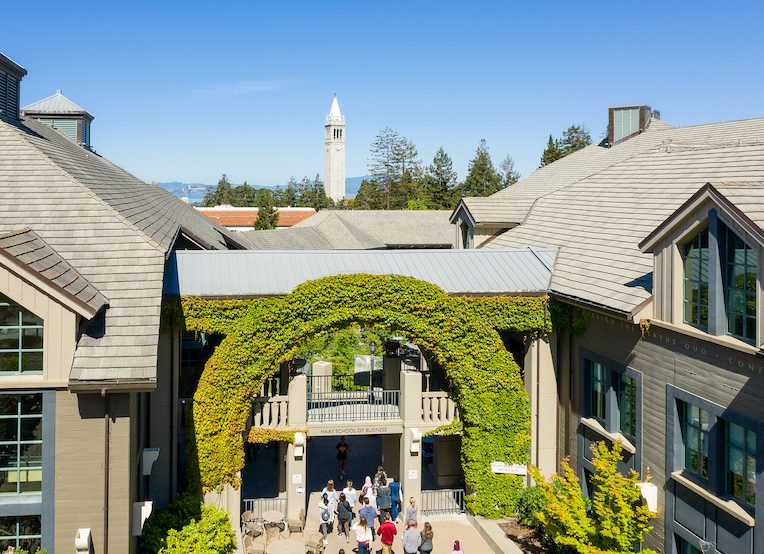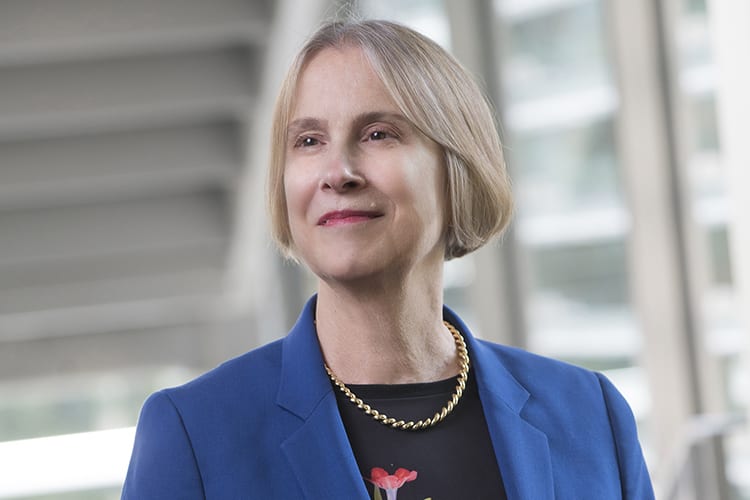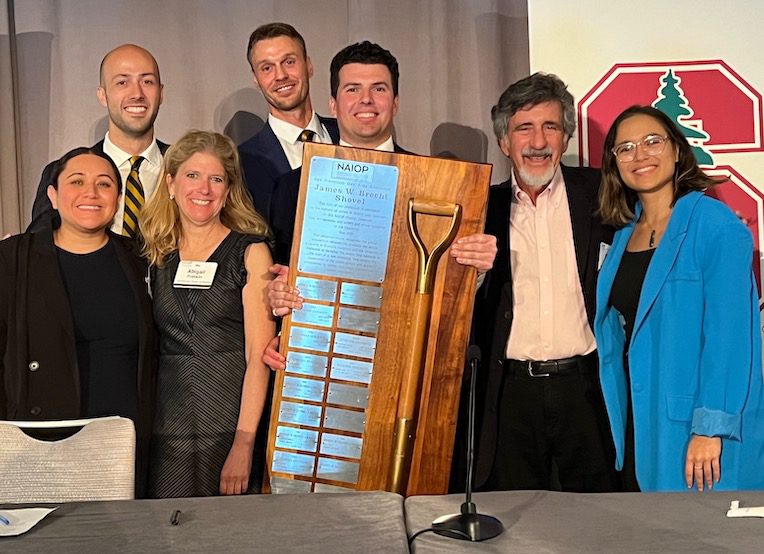U.S. News ranks Berkeley Haas FTMBA Program #7 in 2024
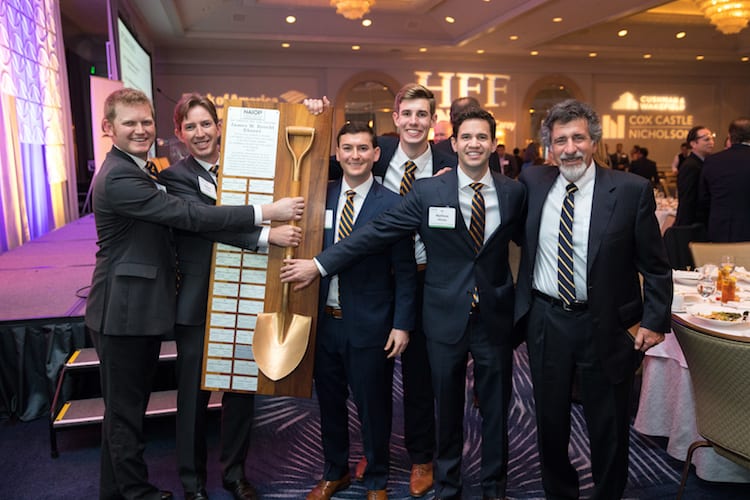
Haas takes back the Golden Shovel from Stanford! Left to right: Breck Baird, Robert Kelly, Peter Fritz, Mark Trainer, Matthew Hines, and coach Bill Falik. All photos: J. Rumans Photography.
A University of California, Berkeley, Haas School of Business team has taken the Golden Shovel trophy back from Stanford Graduate School of Business with an innovative plan for Bay Area Rapid Transit’s (BART’s) Warm Springs/South Fremont station property.
The Golden Shovel is a semester-long real estate competition between students at Berkeley Haas and Stanford GSB, sponsored by the National Association of Industrial and Office Properties (NAIOP). During the competition, each team is assigned the same project and must propose the best use, design, financing, and marketing of a commercial real estate project.
For the 2018 challenge, the teams were tasked with drafting a plan to convert BART’s 2,000-space parking lot into 1.8 million square feet of mixed-use development while working within Fremont’s zoning rules and BART’s development guidelines. Teams made their final presentations on April 25.
The Haas team included Breck Baird, EWMBA 18, Robert Kelly, EWMBA 20; Matthew Hines, MBA 19; Peter Fritz, EWMBA 19; and Mark Trainer, Master of City Planning (MCP) 19.
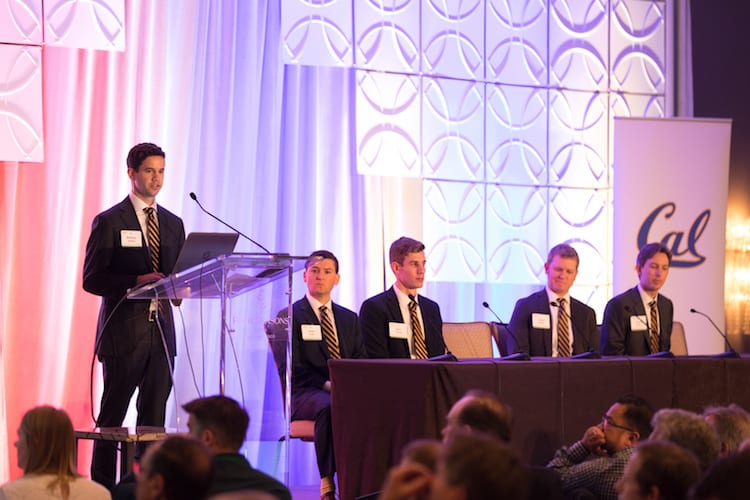
The Haas team makes its pitch.
Top honors in the friendly competition have gone back and forth since its inception 29 years ago, but Haas has now won 16 times compared to Stanford’s 13 victories. The $2,000 prize goes to charity, but the winner gets bragging rights, always a good thing when Cal meets Stanford, said Fritz, vice president of the Berkeley Real Estate Club.
The winning solution included office development, a parking structure, and facilities for companies conducting research and development, particularly in life sciences and autonomous vehicles. In the center of the development, the team envisioned a community hub that could include space for community and educational services. “We focused on serving the community and attracting startups and entrepreneurs through catalysts, such as a medical device incubator,” Fritz said.
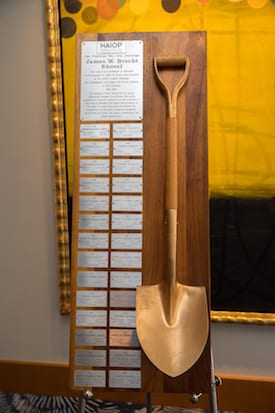
The coveted Golden Shovel goes to Haas!
Cliff Nguyen, Fremont’s urban initiatives manager, praised the Haas team’s proposal in a blog post, writing that “Cal’s unique vision for the site and creative financing approach prevailed.”
Finding a way to pay for a parking structure estimated to cost $70 million was one of the project’s tougher challenges. The team’s solution involved the use of two state programs that would allow the city to issue bonds and pay for them with the tax revenue generated by the project, said team member Robert Kelly, EWMBA 20. “The main key is that the financing is entirely generated by the project, and does not require the city or BART to take from their general funds,” he said.
Identifying the market opportunity for development within the site was another difficult problem. The team spoke with more than 60 people, including real estate developers and brokers who specialize in the area, land use attorneys, and community college representatives, said Hines, president of the Berkeley Real Estate Club.
“Having a deep understanding of the market, and going the extra mile to obtain signed letters of interest (from potential catalyst tenants) were keys,” he said.
Development of a valuable chunk of real estate in the heart of a city is serious business, but the team managed to be a bit lighthearted with the tagline for its proposal: “Make Warm Springs hot again!”
Posted in:
Topics:
